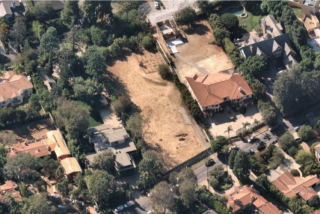Demolition of Arena Highlights a Modern Kind of Development
RICHFIELD, Ohio â The sunrise peeks earlier into Ernestine Cushingâs sitting room now, and neighbor Dan Emmett is watching for the return of predators that might eat his sheep.
Such are the signs of progress-- environmental progress, that is--attending the demolition of the 20,000-seat Coliseum of Richfield.
Where the Cleveland Cavaliers once played basketball and Frank Sinatra crooned, fields of ryegrass and saw grass are expected to be thriving by next year. Aspen shoots will emerge from ground once covered by asphalt.
Instead of giving way to more and bigger commercial development, the Coliseum has become an âundevelopmentâ project thatâs part of a nationwide trend of ambitious back-to-nature efforts:
* In Augusta, Maine, the 162-year-old Edwards Dam was breached in July, opening a stretch of the Kennebec River to migrating salmon, bass and sturgeon. Watching proudly was Interior Secretary Bruce Babbitt, who last year personally took a sledgehammer to two dams being demolished in California and Oregon.
* The town of Times Beach, Mo., evacuated 16 years ago because of dioxin contamination, is being turned into a 400-acre park with picnic areas, boat launch and 14 miles of trails.
* Owners of the shuttered Trojan nuclear power plant in Oregon have proposed making it into a park. The 500-foot-high cooling tower would be demolished, and vacationers could hike through 500 acres of woodlands and marshes near the Columbia River.
* Abandoned rail lines and logging roads around the country have been restored to their natural state and turned over to hikers. Thousands of acres of surface mines have been reclaimed.
As the demolition of the Coliseum of Richfield shows, this greening of America is not universally appreciated.
âItâs mixed emotions, basically,â said Emmett, 68. He raises 240 sheep on a 150-year-old family farm next to the Coliseum site and worries that the restoration will attract more predators such as foxes and coyotes. Heâll also miss the crowds that attended the Coliseumâs events for the last 30 years.
But Emmett also figures that turning the arena into parkland beats making it into a shopping center.
âNone of us wanted to see a mega-mall,â he said. âNobody wanted to see an influx of 12-hour-a-day mall traffic.â
The last few monthsâ demolition efforts have already made a difference for Ernestine Cushing. Sometimes she had to wait until midmorning for the sun to break over the arena. Now the sunrise arrives on time. She also wonât miss unruly fans at rock concerts who asked to park in her driveway and then made obscene gestures when she turned them down.
Even so, when the wrecking ball arrived, âI felt terrible. It was a waste,â she said. âAll the money and to see it torn down. I thought it was terrible.â
The Coliseum site was saved from development by the nonprofit Trust for Public Land, a San Francisco-based organization that has protected more than 1 million acres in 44 states.
Christopher D. Knopf, head of the trustâs Ohio office, spotted a red-tailed hawk overhead during a recent tour of the Coliseum site. âItâs really going to make a nice piece of property,â he said.
The trust paid more than $7 million for the Coliseum, vacant since the Cavaliers moved five years ago to Gund Arena in downtown Cleveland. The trust resold it to the National Park Service for $9 million, adding the cost of demolition to the price.
By acting as middleman, the trust helped add the Coliseum site to the surrounding Cuyahoga Valley National Recreation Area, a 33,000-acre preserve between Cleveland and Akron.
The Coliseum was sold by the Gund family, which owns the Cavaliers and whose foundation helped underwrite the cost of opening a Trust office in Ohio.
Knopf said saving the 327-acre Coliseum site was important because it lies between two big cities in heavily developed northeast Ohio.
âItâs a different type of park. Itâs not a Yellowstone; itâs an urban environment,â Knopf said, his words underscored by the whiz of truck traffic on nearby Interstate 271.
About 90 acres of the site were occupied by the Coliseum, parking lots and roads. Environmental concerns have been paramount in the process, not just the results, of reclamation: Steel, parking-lot asphalt and some masonry were recycled. Wood went to a jail where inmates make toys for needy children. Crews have graded the site to resemble its original contours, and they plan to spread 2 1/2 tons of native grass seed over a trucked-in layer of topsoil and compost.
Some previously manicured lawns already have given way to milkweed and thistle, a testament to natureâs ability to regenerate, said Kim Norley, landscape architect for the park service.
Trees wonât be planted. Instead, plant life will be allowed to spread naturally from nearby woodlands and from seeds in bird droppings. Aspen typically shows up first.
âThatâs about it to go back to nature,â Norley said. âLet Mother Nature do her work.â
More to Read
Sign up for Essential California
The most important California stories and recommendations in your inbox every morning.
You may occasionally receive promotional content from the Los Angeles Times.










